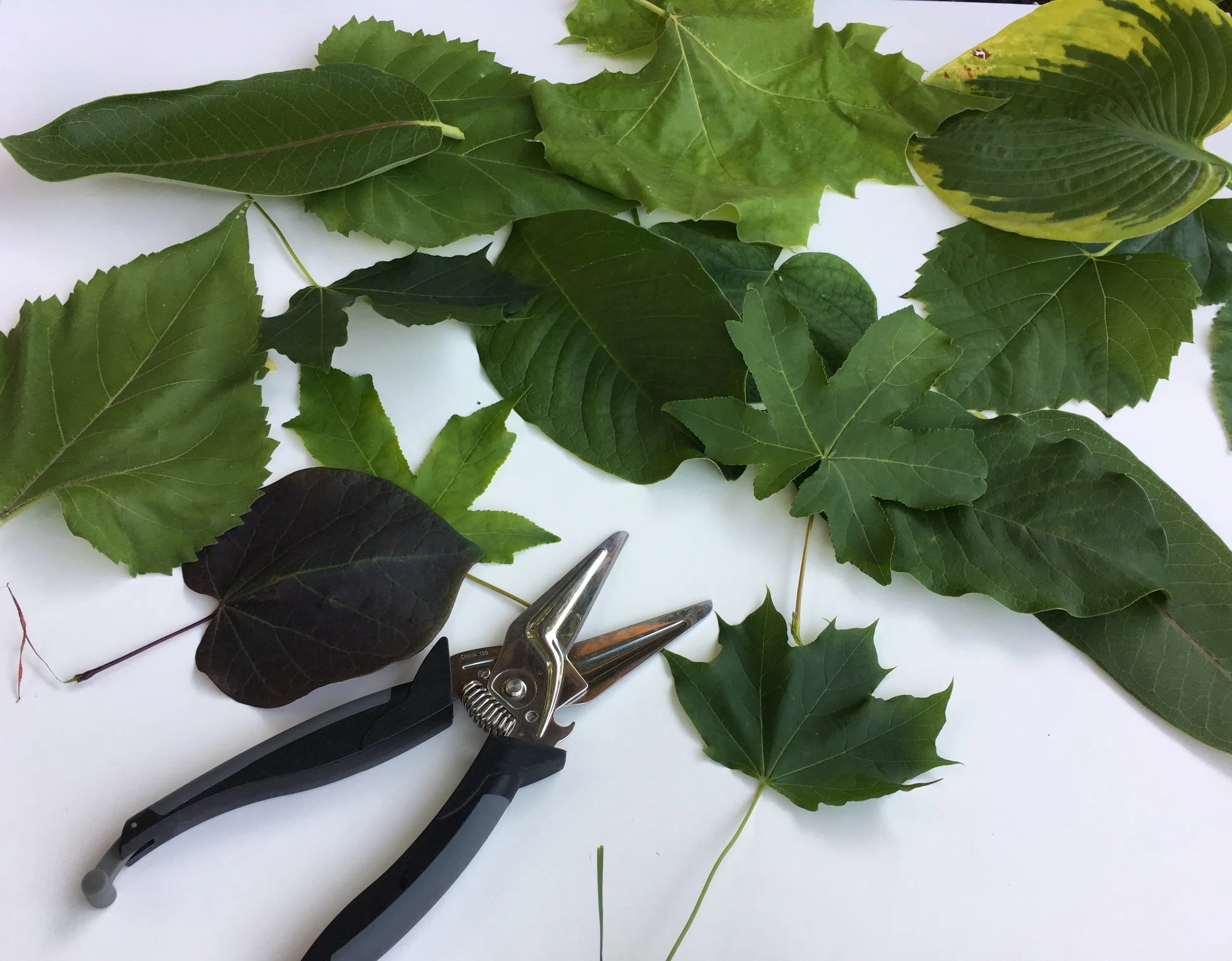Whenever I do puzzles with my three year old I have to stop myself from providing too much help. Sometimes I worry that she’ll get frustrated if it’s too hard, or I’ll get impatient and want to speed things up. I hand her pieces that are right-side up and positioned for easy placement. I need to slow down. I’m trying to remind myself to take a step back, observe, and allow her the chance to work out all the transformations needed to find the perfect fit. As a boy in a kindergarten class I was observing said to his classmate, “Don’t steal her struggle!”
PLAYFUL INVITATION
1. Prepare: Find a variety of leaves and a pair of scissors. Cut a few leaves in half.
Observe the child throughout the interaction. Use the Invitation to Play Documentation Tool to collect data.
2. Invite: I’m trying to put this leaf back together! Will you help me find the perfect match to make my leaf complete?
3. Play: For toddlers and young preschool children, begin with two leaves cut in half. Place one piece in front of the child and the three other halves in reach. Ask the child to try and find the one that looks the same to make the leaf whole. For older children provide more choices.
Continue this game using different types of leaves. Notice attributes of the leaves and talk/ask questions about the shape. Is it pointy or round, dark green or light green?
4. Reflect and Assess: How much assistance did you offer the child? Was the child able to independently choose the correct leaf? Was he able to move and turn the leaf to create a whole? Did you find yourself offering assistance? What other types of puzzles can you create?
What words and language did you and the child use to describe the leaves? Were you surprised by anything?
Ready: The child is ready if he/she has some experience matching two identical shapes and has taken things apart and put them back together. It would also be beneficial if the child has explored the property of leaves before being asked to use them for math learning. Observe a small pile of leaves and the attributes before taking them apart.
Play a matching game with similar leaves.
Extend: Cut larger leaves into four pieces for added challenge.
This game is not just about shape and puzzles. Putting pieces together to create a “whole” introduces the concept of fractions at a basic level.
Below is a picture of my 5 year old’s favorite puzzle game, Pattern Play by Mindware








